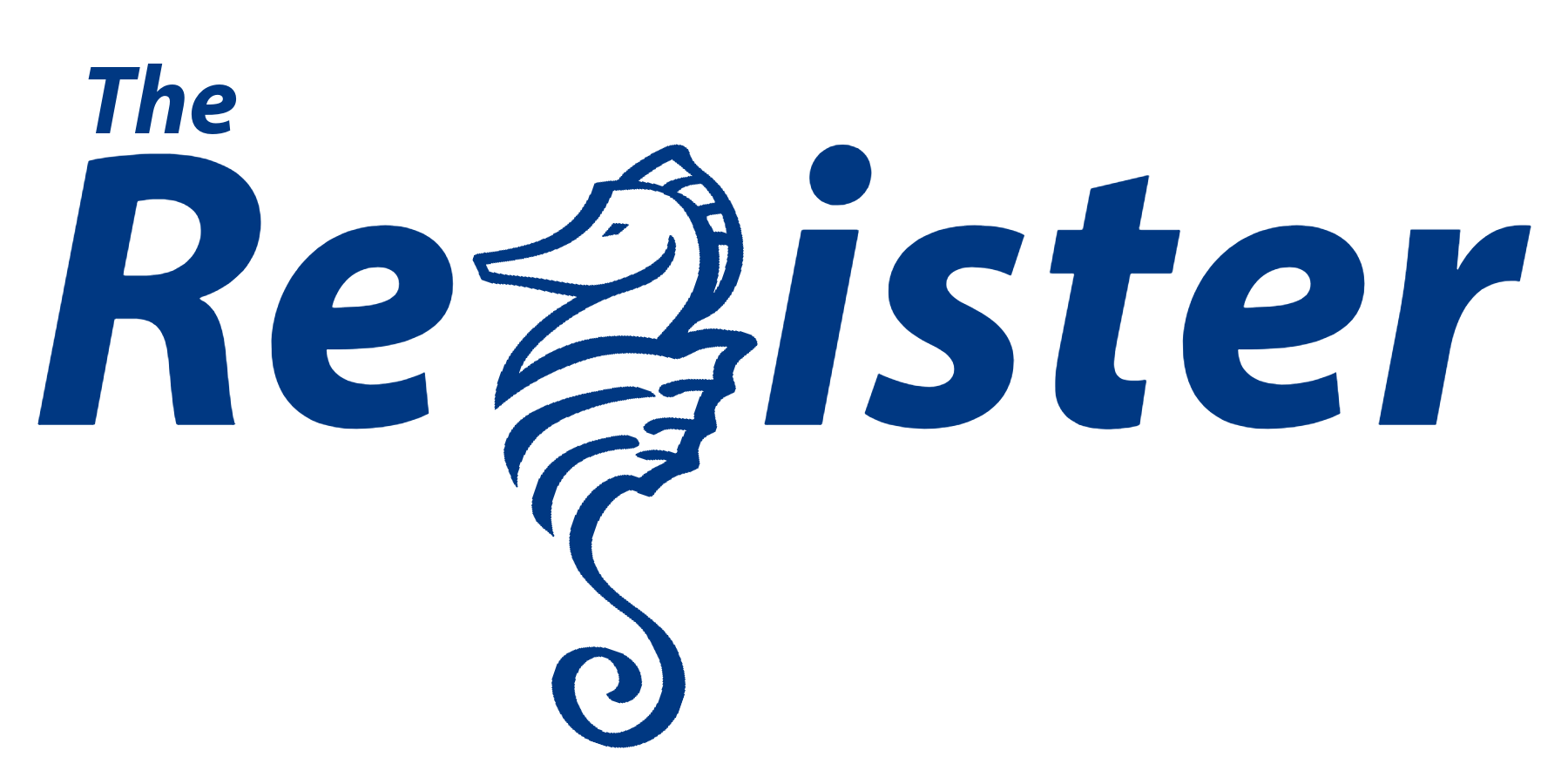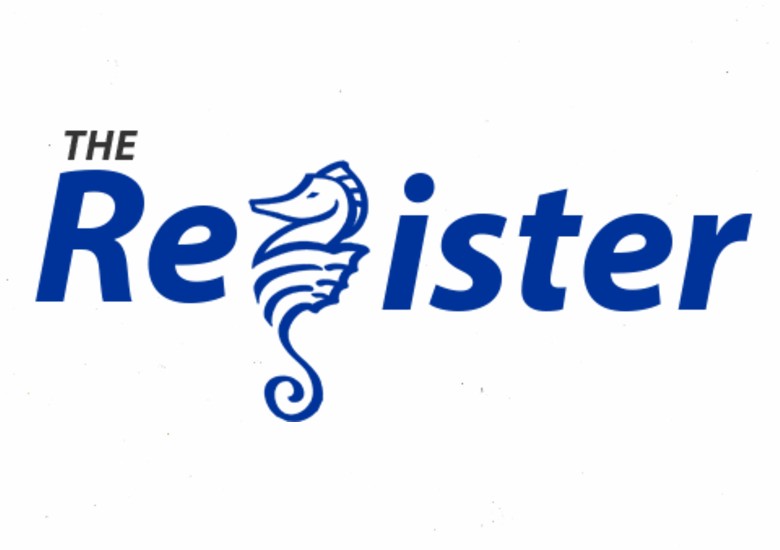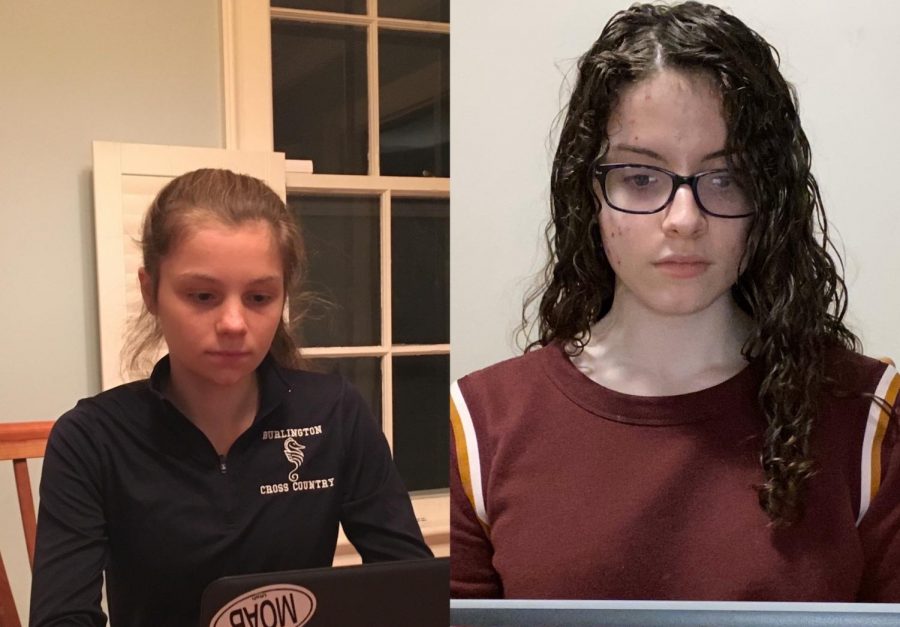Student representatives aim to improve communications between the student body and the School Board
November 17, 2020
On a cold October evening, BHS junior Rebecca Cunningham delivered a heartfelt speech over Zoom to the Burlington School District’s School Board. She urged the commissioners to consider allowing students to reenter the Burlington High School (BHS) building for in-person learning: “This type of social isolation can lead to significant mental health issues, such as depression or suicide,” Cunningham said.
Cunningham, who, full disclosure, is a staff writer on the Register, and BHS sophomore Julia Hondal, are the two student representatives on the Burlington School Board. The position was created with the intent of opening communications between the School Board and students. Cunningham and Hondal fulfill this role and make it their priority on the board to share the student perspective and advocate for student needs.
“From the eyes of a student, we really need to hear their voice to say what’s working, what’s not working,” Clare Wool, the chair of the Burlington School Board, representing Ward 7, said.
One way Cunningham and Hondal accomplish this is by presenting a ten-minute student report to the School Board once a month. According to Hondal, the report gives the board feedback on district issues from students and families from many different schools, not just BHS, and describes upcoming events.
New to the job, Cunningham and Hondal had a few difficulties with their initial reports. They both learned half-way through their work, on their October 20th presentation, that they needed to use official forms in order to include information from principles and families.
“I’m still learning a lot,” Cunningham said. “There’s so much going on. And you know, not everything is addressed at every board meeting, so I just keep learning when new ideas and concepts are brought up and discussed.”
Cunningham and Hondal were both appointed to the School Board at the beginning of this school year. Upon assuming their positions, they both received an orientation on their roles. Wool has offered the representatives further support.
“Clare Wool has been really helpful and reached out to us,” Cunningham said. “She tried to help us write our report and gave us suggestions. And I know that when we join the Zoom calls, everyone’s been really happy to see us there and really encouraging and welcoming.”
Aside from the student report, Cunningham and Hondal can also give feedback to the School Board throughout the meeting.
To strengthen her feedback, Hondal reached out to students on social media with an anonymous survey.
“As a student representative, you really have to be advocating for what the students want,” Hondal said. “If there’s an issue you think that the students should really know about, I would feel responsible to reach out with my platform on social media to tell people like ‘this is what’s happening on the School Board. What are your thoughts?’ I’m not just making choices for myself.”
Wool has encouraged Cunningham and Hondal to reach out to students from all corners of the school to ensure their comments are representative of BHS’s diverse student body.
“I’ve shared with them, in my orientation, that it’s really important that you reach out to all your students, so your comments are reflective of everybody,” Wool said. “That’s a big task, because they’re just two young students.”
Cunningham expressed the difficulty of contacting diverse students while the BHS community is learning remotely.
“Without public spaces where students gather, it is hard to reach people I do not know personally,” Cunningham said.
Though School Board policy states that two student representatives should always be on the School Board, it does not expressly put a limit on the number of student representatives that can serve at a time. In the future, Wool hopes to add more student representatives to the board to better reflect the BHS population.
“I would love [to have] a male representative, [to have] a representative from the LGBTQ population, a representative from our BIPOC students,” Wool said.
Wool worked hard to encourage a diverse number of students to apply for the position but was unsuccessful.
“I was so disappointed,” Wool said. “I kept promoting it. The applications were in the office, and you know, they would go out. And student advisories, they were supposed to be [announcing it]. You had your announcements read. And it’s just, I didn’t get a lot of buzz for kids to do it.”
After hearing an appeal from Wool at an assembly, Cunningham and Hondal were two of the students that did step up to the plate.
“I think that students’ voices are often discredited as being too young and too little experienced, which I think is not true,” Cunningham said.“…Especially at the high school age, I think students are old enough that they can start assisting and helping out with these decisions.”
Though the School Board added the student representative position. The board’s need for student input extends beyond the abilities of two student representatives.
“I’m really sad that for some reason at the middle school level and the high school level, here in the city of Burlington, we haven’t had a structure of student government,” Wool said. “…I think adults are making decisions for you when your voices aren’t at the table.”
Dan Hagan, a history teacher at BHS, reported that there was a student government when he graduated from the school in 1996.
“I do remember about 15 years ago that there was only student council, and it was supposed to be about student government and planning events,” Hagan said. “It had become a popularity contest, however, and wasn’t doing any governing, so Student Planning was created.”
Francesca Dupuis, also a BHS history teacher, remembered another attempt to reestablish student council at BHS, around five years ago. She said the group disbanded because they could not secure an advisor and struggled to find time to meet with administration.
“Students’ engagement, more specifically, willingness to proactively plan and implement ideas, has waned significantly,” Dupuis said. “This, again, in my experience, has led to teachers putting in more work [into student organizations] than students.”
Though Cunningham, as a student representative, is in a position to make her voice heard, she sometimes struggles to have the confidence to offer dissenting opinions.
“Because I’m a younger representative on the School Board, I struggle to say that I disagree [with other board members],” Cunningham said. “Because it’s hard when a lot of adults, who just as adults have more power, disagree with me. So, I think sometimes I don’t say what I want to say because I fear the power discrepancy.”
Wool admitted that speaking up on the School Board can be intimidating. However, she said that the board tries to create a space in which Cunningham and Hondal feel comfortable sharing their views.
“Respectfully, it is just one of those things you have to overcome, if you’re only a body of one,” Wool said. “Where if there was a student school board, student rep committee, how great would that be?”
Though Cunningham and Hondal are responsible for the student report and are allowed to ask questions and give feedback throughout the meeting, Hondal feels that she could be doing more.
“It just feels frustrating that on the board, as a student representative, we don’t get a vote,” Hondal said. “It’s our school, and why should the adults be deciding what they think is best for us?”
According to the Burlington School District policy, student representatives are allowed to cast an advisory vote that is recorded in the minutes of a school board meeting. However, they are prohibited by law from casting an official vote.
“It comes down to the rules of engagement in your elected office that you’re managing,” Wool said. “You have a responsibility, an elected office responsibility.”
In the future, Hondal hopes that the School Board will move forward with school construction soon, so they can discuss other issues that have a greater impact on student life.
“If [students are] not heard, they’re being silenced. And is that really a democracy? No,” Hondal said.
The next School Board meeting will be live-streamed Tuesday, November 17th, via Zoom at 6:00 p.m. To access the meeting, visit the Burlington District website at www.bsdvt.org, www.retn.org or the district Facebook page. Cunningham and Hondal will present their upcoming student report on December 8th.





